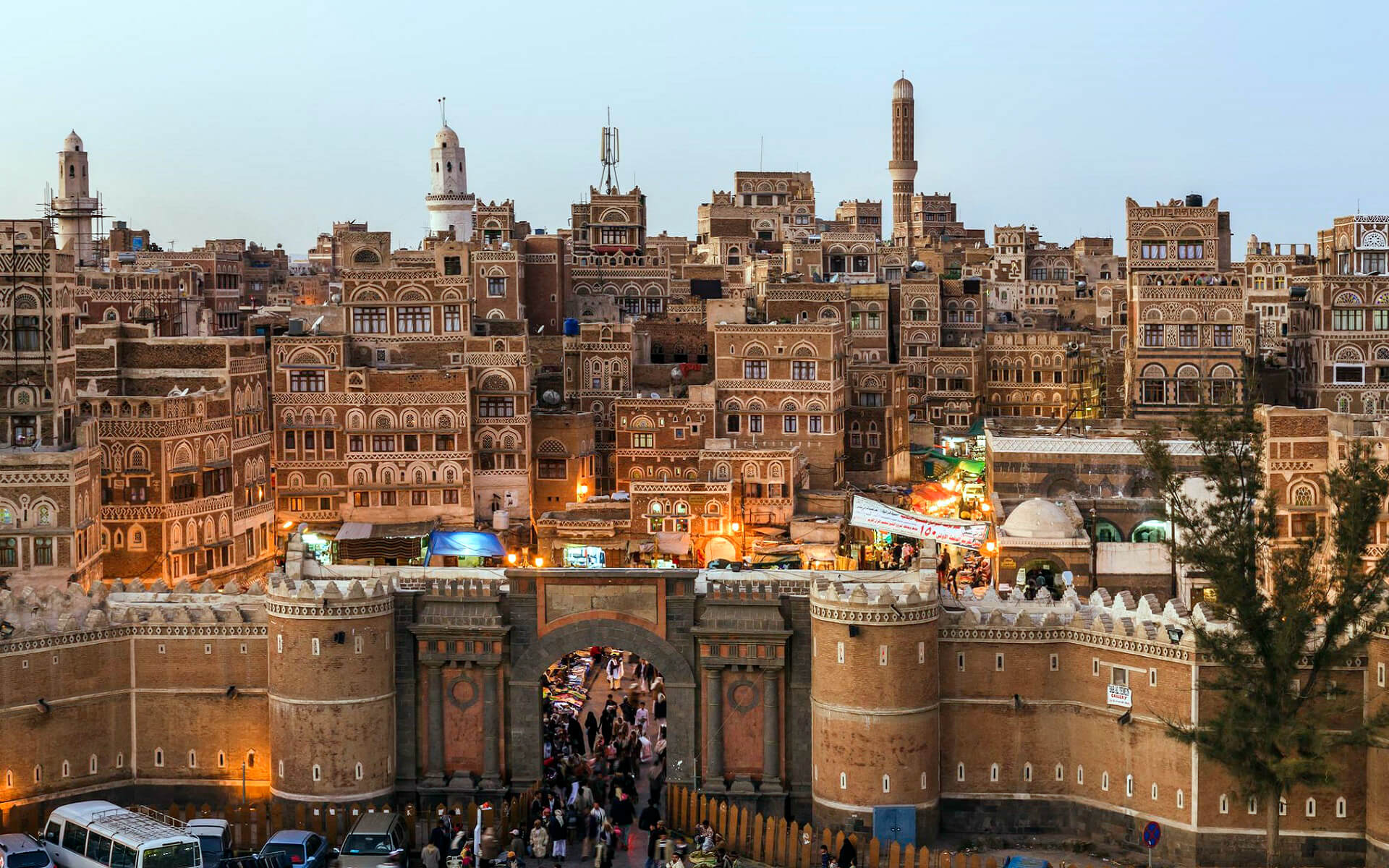Sana’a, one of the world’s oldest continually inhabited cities (the others being Jericho, Damascus, and Aleppo), is claimed to have been created by Shem, Noah’s son. As a consequence, the city has earned the unusual moniker “Sam City.”
Sana’a will start surprise you as soon as you step out of the airport. The jambiya, a distinctive Yemeni dagger, is worn by all police officers and citizens. Even little infants are adorned with daggers. Because of consuming qat leaves, everyone gets a swelled cheek. Because of the consistently painted windows and walls, all buildings outside the airport seem the same.
THE OLD CITY
The historic fortified city has been inhabited for over 2,500 years and is home to numerous surviving architectural masterpieces. The United Nations designated it a World Heritage Site in 1986. Efforts are being made to preserve some of the oldest structures, like the Samsarh and the Great Mosque of Sana’a, which are over 1,400 years old. The old city is surrounded by historic clay walls that reach 9–14 metres (30–46 ft) high and has more than 100 mosques, 12 hammams (baths), and 6,500 dwellings. Many of the homes are many floors tall and have flat roofs, like antique skyscrapers. They have complex friezes, beautifully carved frames, and stained-glass windows.
Suq al-Milh (Salt Market), one of the most famous attractions, sells salt as well as bread, spices, raisins, cotton, copper, ceramics, silverware, and antiquities. The 7th-century Jami’ al-Kabir (Great Mosque) is one of the world’s oldest mosques. The Bb al-Yaman (Yemen Gate) is a well-known access point into the city walls that dates back over 1,000 years.
Al Madina is a business district in the ancient city that is quickly developing. There are various boutiques and restaurants in addition to three huge hotels. There are three parks in the neighborhood, as well as the President’s mansion.


